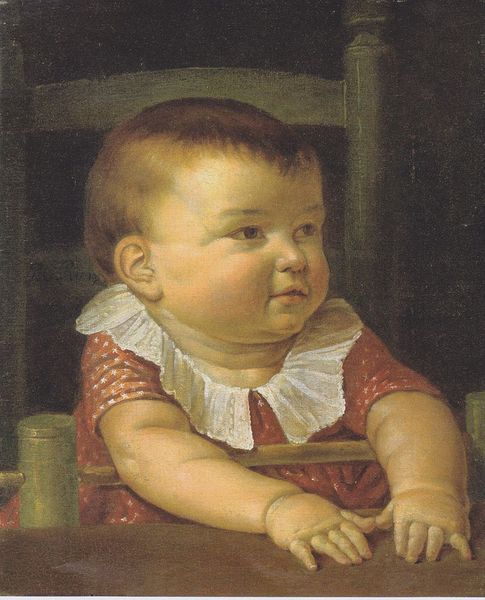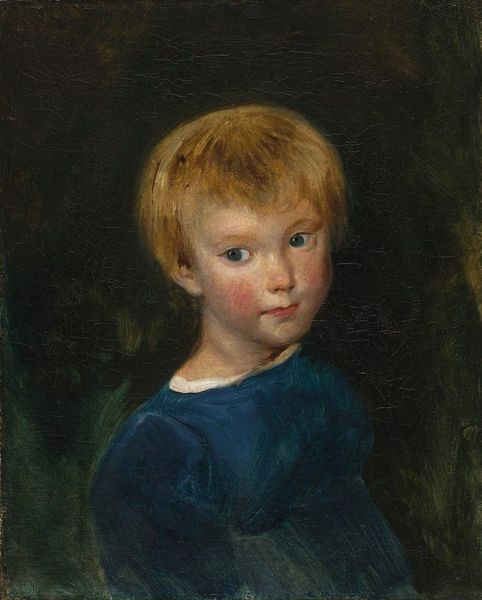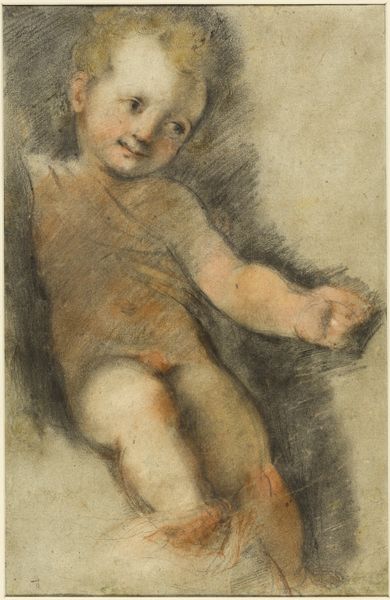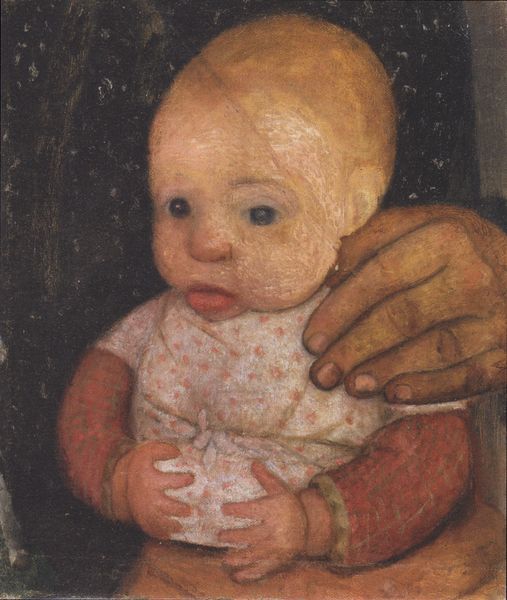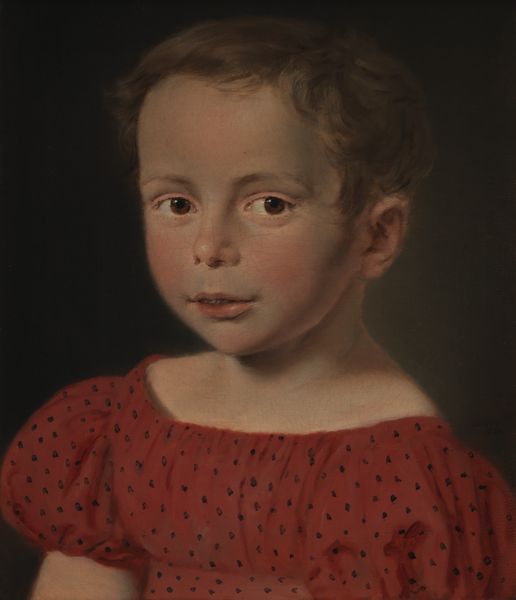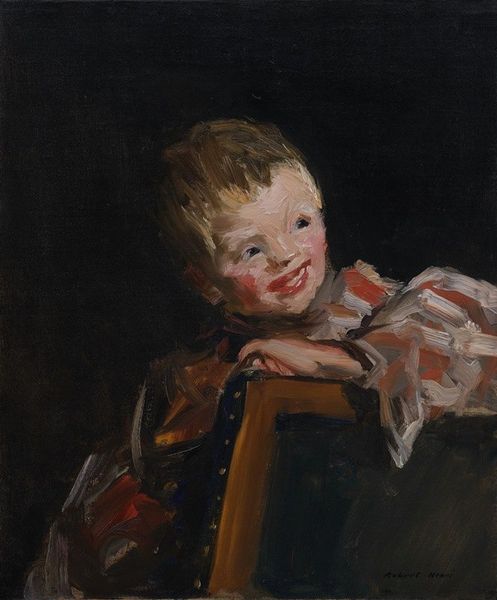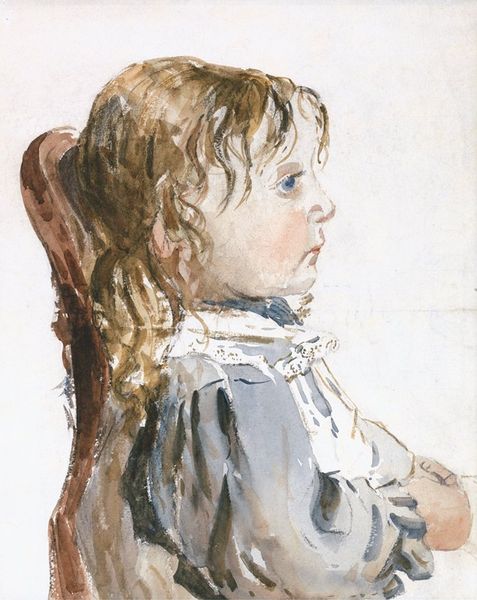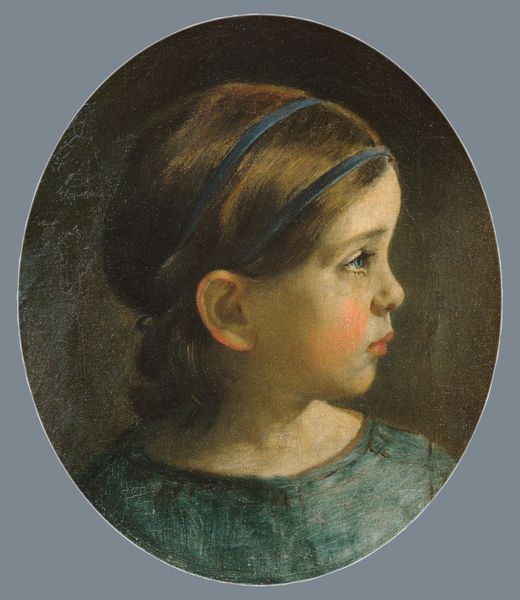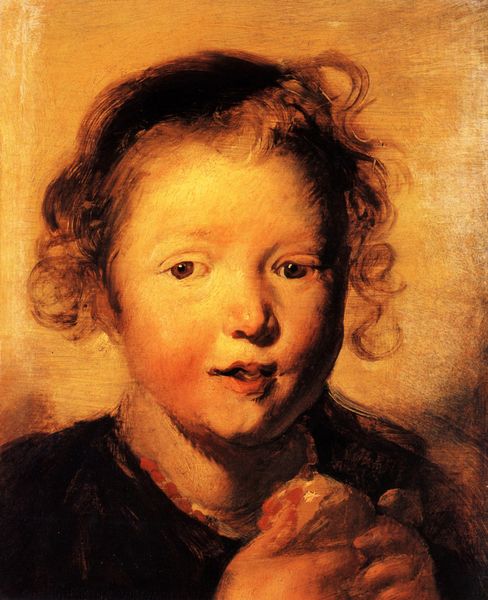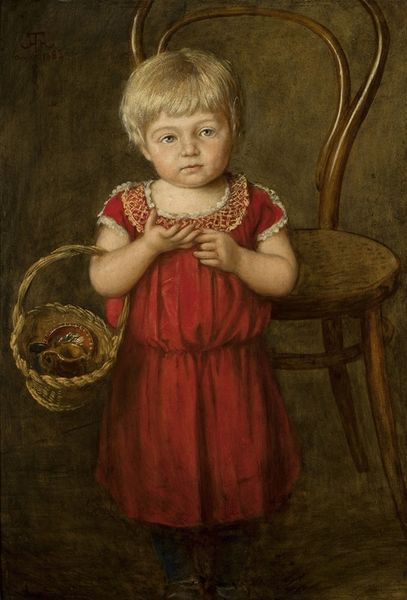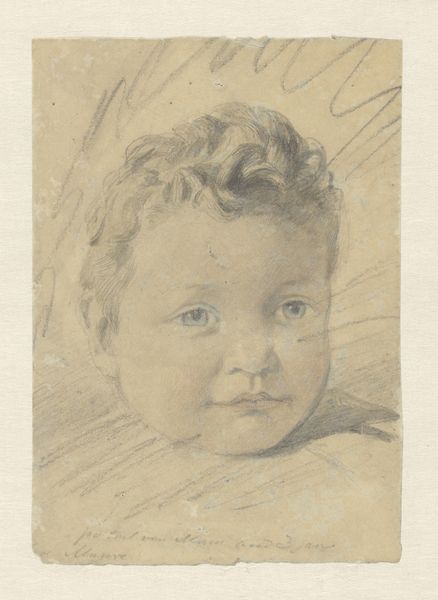
painting, oil-paint
#
painting
#
oil-paint
#
oil painting
#
romanticism
#
genre-painting
#
northern-renaissance
Dimensions: 22.5 cm (height) x 20 cm (width) (Netto), 32.2 cm (height) x 29.3 cm (width) x 7.3 cm (depth) (Brutto)
Curator: Here we have Christen Købke's 1832 oil painting, "Ida Thiele, the future Mrs Wilde, as a Child," currently residing at the SMK in Copenhagen. Editor: What a delicate rendering! There's a certain stillness in the subject's gaze, isn't there? The textures, the soft curls against that simple rose backdrop, convey such innocence. Curator: Indeed. It's a compelling depiction of childhood within the Biedermeier period. Consider the rise of the middle class and the new emphasis on domesticity. Portraits of children became increasingly common, reflecting both parental pride and a new understanding of childhood as a distinct phase of life. Editor: The formality in the posture contradicts the age. Notice how the artist uses a very tight tonal range: from pink face and pinkish wall background to crimson and burnt sienna shirt. A visual key element is, for example, the construction of the puffy sleeves in the garment which mimics the child's round cheeks, thus binding the subject and design into one visual unit. The angle and composition make her seem very monumental in this space. Curator: It speaks to the social conventions of the time, doesn't it? Even in a portrait of a child, there's an attempt to project an image of respectability and decorum, suitable for the aspirational middle class. Though her direct but sidelong gaze almost seems as though she looks suspiciously upon us! Editor: It gives an air of reflection beyond the mere childish! The limited palette heightens the image, lending an emotional weight, I’d suggest a kind of subdued anxiety. The color choices aren’t merely descriptive. They evoke an inner state. Curator: Precisely. And we shouldn't forget Købke's own social position. He was part of a generation of artists consciously developing a Danish national identity. Genre painting allowed for sentimental explorations, emphasizing intimacy. So the historical importance also resides in how Danishness itself was conceptualized. Editor: I'd agree the quiet intimacy draws me in and helps bring this canvas to life. The artist creates a space for internal reflection simply from the choice of the compositional framing, scale and color tones. Curator: Yes, and that invites us to think about how ideas of childhood and national identity intersect in a given sociohistorical environment. Editor: A fascinating journey through brushstrokes and history! Curator: Absolutely, the convergence of image and historical narratives are the rewarding part.
Comments
No comments
Be the first to comment and join the conversation on the ultimate creative platform.
